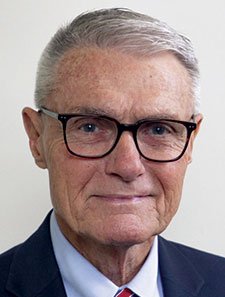 Scenario
Scenario
Mr. Samuel Self is seeing you today for a second opinion consultation. He is a 46-year-old male who has been diagnosed with an HPV-negative head and neck cancer, stage 3. He’s an oil refinery worker and has missed the last month of work owing to the diagnostic evaluations. While he stopped smoking three years ago, he does relate an alcohol intake of six to eight beers per week for 30 years. Otherwise, he has no significant health issues beyond the cancer. He is accompanied by his wife, Stella, and one adult child, Ben, who is studying industrial engineering in college.
Explore This Issue
May 2025His primary otolaryngologist–head and neck surgeon had referred him to a radiation oncologist and a medical oncologist for evaluation and consultation. Mr. Self presents those records for your review, all of which confirm the diagnosis.
Typically, you have begun the conversation with, “What has brought you to see me today?” Mr. and Mrs. Self both affirm that he wishes you to give him hope for the successful treatment of his cancer and longevity. Both of the oncology consultants seemed quite confident that he had a very good prognosis, with one opining that he “may well live to be 100 years old.” Conversely, the initial otolaryngologist was more reserved, indicating that, due to the cancer stage, his five-year survival would likely be around 50%, and beyond that, “He couldn’t give us much hope.”
Mr. Self and his family are confused about the conflicting prognoses. Having heard from friends and relatives that your reputation for honesty is excellent, they are looking forward to good news from you. They state to you, “Please give us hope.”
How would you respond?
Discussion
How often have we heard the phrase “Hope springs eternal” in our personal and professional lives? From a poem by Alexander Pope, the phrase conjures up one of the strongest intrinsic human qualities, one we use to cope with difficult, threatening, or existential situations, usually those beyond our direct control. As physicians, we are duty-bound to help our patients through such challenges as well as we possibly can, but does our professional duty require us to provide hope at any price? To help the patient hold out for hope when all objective criteria point to a hopeless situation? Part of our challenge is to make certain that we understand an appropriate (realistic) hope and one that is not. We may find ourselves in a situation where we are asked for hope by a patient such as Mr. Self and find the discussion very difficult to navigate. So, are there any formal or informal guidelines we can turn to for assistance in such a discussion?
We first need to evaluate the implications for hope in patients with advanced disease. For that, we look toward our ethical and moral professional foundations, along with the physician virtues that characterize the fabric of our care of patients. We are bound by the primary ethical principle of patient self-determination (autonomy). The dyadic relationship of patient autonomy and physician veracity compels us to be transparent and honest in all our discussions with patients, for they cannot make meaningful decisions or garner hope for a positive outcome without the evidence and the physician’s understanding of the evidence as it applies to that particular patient’s condition.
To inform the patient properly and fully about their condition, we do need to be learned and updated on the evidence. We also must convey that information to the patient in a manner that is understandable to them. To just state, “Your five-year survival will be 50%,” is far from helping them understand what cancer survival statistics represent (population-based) or how those data differ among individual patients and different treatment facilities. For patients and physicians alike, knowledge is power—and an ethical obligation for physicians when counseling patients.
How and why patients often seek to embrace hope when they are in the midst of serious medical conditions is, in good part, a product of their personalities, upbringing, faith or religiosity, support systems, and mental/emotional state. Central to a state of despair and potential hopelessness is the notion of “loss of control” over their life and uncertainty about how their life may end. Additionally, fear of pain, loss of functions, and concern for their families play a large role in their need to seize hope. The sudden onset of disease may produce more anxiety and hopelessness than, say, a protracted illness over time. When discussing hope with patients and their families, it is important to first query them about their quality-of-life choices and perspectives, obtain a helpful social, economic, spiritual, and support systems history, and understand their capacity for hope.
As well, physicians have their individual beliefs of what is hope, based in good part on their own growth and development, with their own level of health experiences, communication skills, empathic capabilities, and religiosity regarding hope and hopelessness. We do need to understand our own beliefs on hope through introspection and to be aware of the potential for their impact, both positively and negatively, on how we guide the patient’s search for hope.
Even in the most dire or futile-appearing patient conditions, none of us can be absolutely certain of the prognosis and outcome of any given patient’s condition. We have seen patients with no apparent hope slowly improve and progress to the point of hospital discharge and extension of life. Some patients view this occurrence as a miracle or a sign of salvation by a higher being—and perhaps this is the case. But, although we might be correct about our prediction of a patient’s outcome a high percentage of the time, we are never 100% accurate. We cannot be infallible owing to our humanness.
We can adopt a general assumption that realistic hope is based in good part on data, medical evidence, and condition of the patient, with some reliance on population-based outcomes for a given condition; however, these data have not taken into account several important factors that may surface during the patient’s evaluation and treatment, including the patient’s will to live, their internal strength, love and encouragement from family and friends, and often a belief in a higher power.
Unrealistic hope may occur when patients do not fully understand their disorder or cannot understand because of language barriers, outside influences, misinformation, or even a need to hear only what fits with the narrative they want to believe. Communication with patients is critical to helping them understand what they are facing—both in teaching and in learning from them—through a process of active listening and exploration. We want to join the patient in avoiding unrealistic hope to the extent that is possible, for unrealistic hope can be depressive and dispiriting if their hopes do not play out. Hopelessness is not conducive to a patient’s response to the disorder or their therapy, so we must be attuned to their having a positive approach to treatment, as their response to treatment may be improved by an attitude of positivity.
When counseling a patient and family members about hope in their diagnosis and prognosis, it’s not uncommon to hear the expression “we hope and pray” in the context of the discussion. This phrase can be an appropriate lead-in to a discussion of their spirituality and how faith and belief can impact their developing a proper level of hope moving forward. As spiritual beliefs on hope, dying, and coping with serious health conditions can vary among religions, taking a spiritual history as part of the patient evaluation can greatly inform physicians about how patients and their families may incorporate their beliefs into the formation of realistic, positive hope in the face of uncertainty. Faith-based hope may help alleviate despair and distress and strengthen them during their journey of care.
Realistic hope can be beneficial to the patient if developed within the envelope of evidence and experience known by the clinician and bolstered by an honest, informed discussion with the patient. Unrealistic hope by the patient can be recognized and redirected by the physician to a more feasible level over time—frequent, ongoing discussions throughout treatment will allow for revision and readjustment of the patient’s perspectives based on progress and response. At some point in the line of care, the patient will generally come to understand how their disorder will play out and the reality of their hope will become obvious to them.
In this scenario, Mr. Self and his family members have received mixed signals from physicians about his prognosis, from “You could live to be 100 years” to “You have a 50% chance of living five years.” Although you are not, at this time, the primary leader of his care team, you have established a patient–physician relationship with him, so you are now bound by the duties of veracity, compassion, and integrity under the umbrella of the four pillars of medical ethics—autonomy, beneficence, nonmaleficence, and social justice.
We tell the truth to the patient and family as we understand the evidence, while also realizing that every patient is different and population-based data do not always fit a given patient. We will seek realistic hope, based on the patient’s understanding of his condition, his quality-of-life preferences, and his belief and support systems. We can support a patient’s realistic hope within our duty for professional conduct while also guarding against unrealistic hope that may become devastating to the patient throughout his care. Our honesty, empathy, and understanding are fundamental to helping the patient walk his future path with the possibility of hope that is realistic and provides him with strength and purpose.
 Dr. Holt is professor emeritus and clinical professor in the department of otolaryngology–head and neck surgery at the University of Texas Health Science Center in San Antonio.
Dr. Holt is professor emeritus and clinical professor in the department of otolaryngology–head and neck surgery at the University of Texas Health Science Center in San Antonio.
Leave a Reply